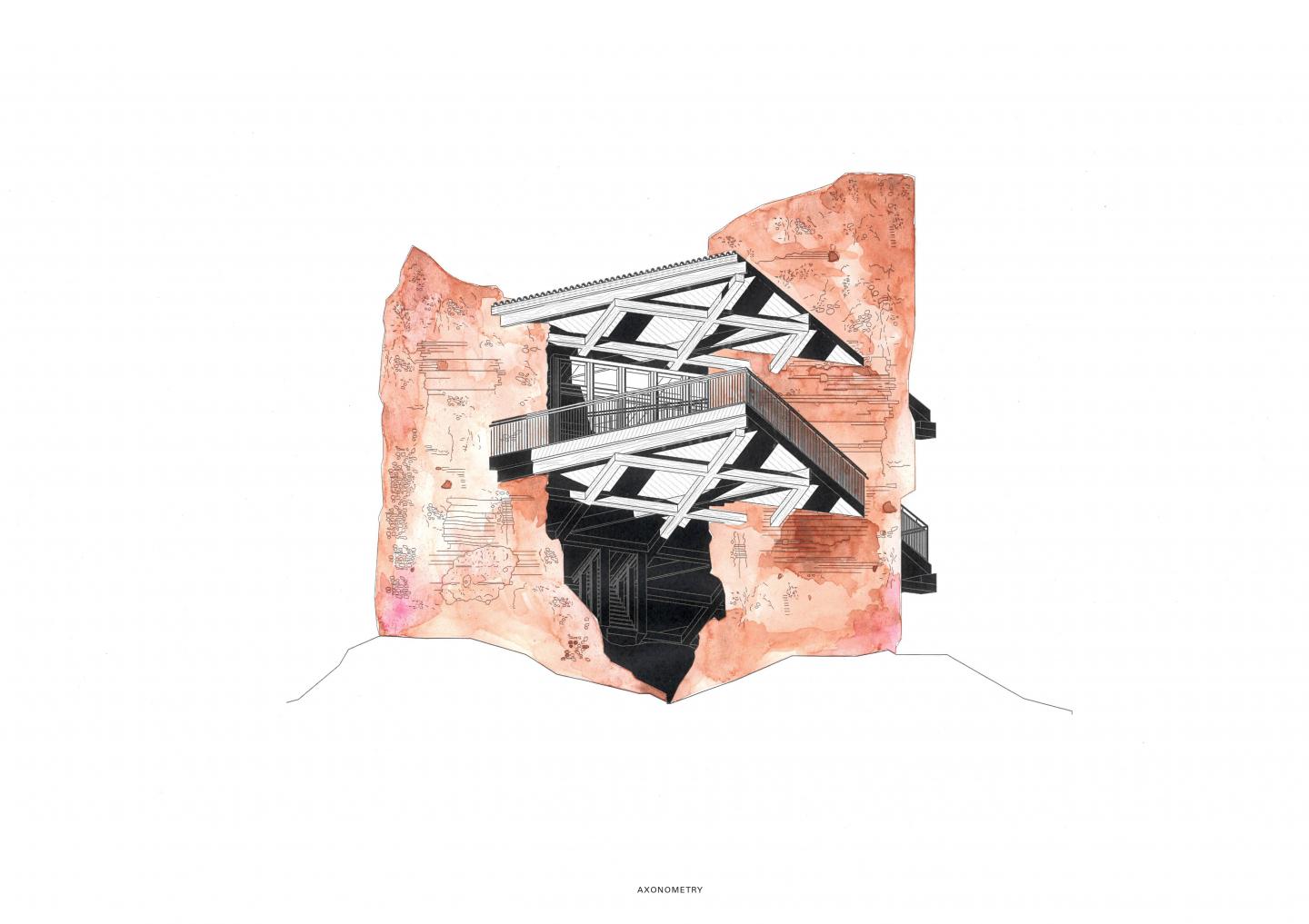The main design intention is to create a modernist construction, built directly in the Roman ruins, that contrasts them. The construction can be described as a "square" that is tilled in the ruins, thus creating two facades—an ancient and a modernist one. Our goal is to have a structure that is directly attached to the ruins. The ruins play an important role in the project; our goal was to bring them into the room. We used their organic shapes to create niches inside the structure. The furniture is designed to follow these shapes. The stairs can be described as the heart of our bar, as they are central to the building, and the entrance is surrounded by the bar itself. They are not touching the ground, strengthening the idea that the bar is supported only by the existing ruins.It is possible to think of this "modernist square" as two platforms that act as a floor and a roof, supported by two sets of beams that are driven straight through the ruins. The glazing is done where an opening was left by the ruins. With this project, we investigated the concepts of transience and permanence. The bar we designed is a modernist structure that starkly contrasts with its surroundings—the ruins of Rome's second-largest villa. In this way, we were able to create a visual representation of the theme of time, thereby expanding its deeper exploration. As a result, we've created a poetic project that depicts the past and the future, raising questions like, "How can we breathe new life into old places? How can we integrate the past with the present? Do we change social memory when the historical context's purpose changes?"
2023
The bar has an area of 80 square metres. Two sets of beams form the framework of the structure. The first set (30cm x 40cm) is parallel to and pierces the ruins. The second set consists of thinner beams (20 cm x 30 cm) that run parallel to the modernist form. The two sets together form a grid that supports the entire structure.
Designers: Elias Böhnlein, Iya Shopova
Supervisor: Tina Кüng, Studio Christ/ Gantenbein, ETH Zürich
Favorited 1 times










